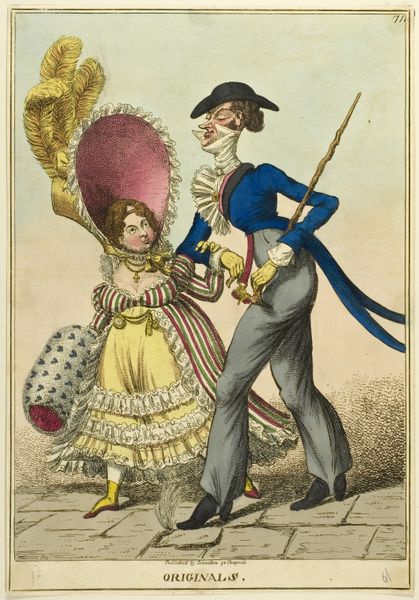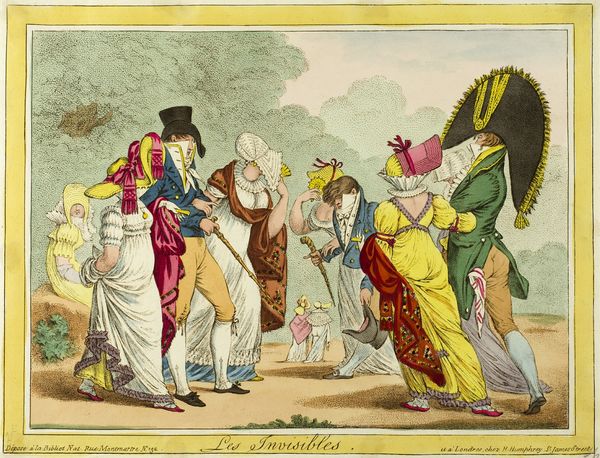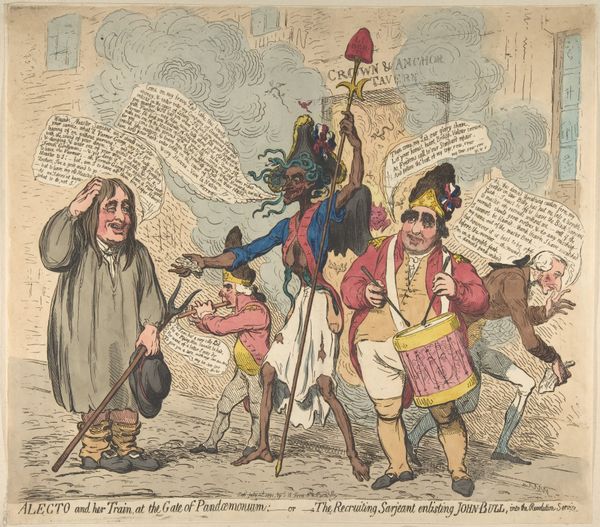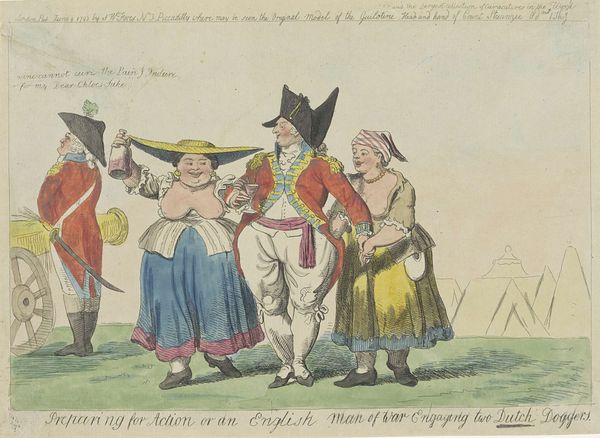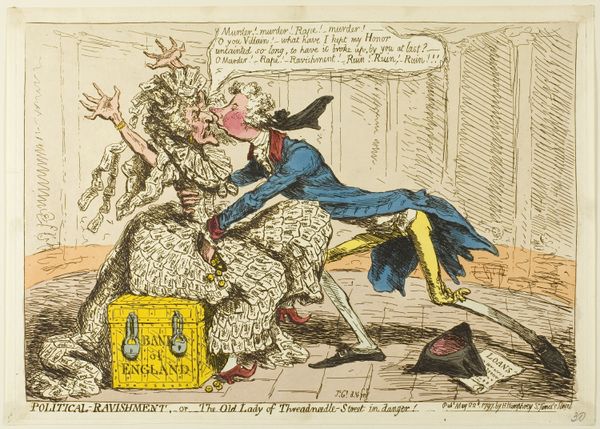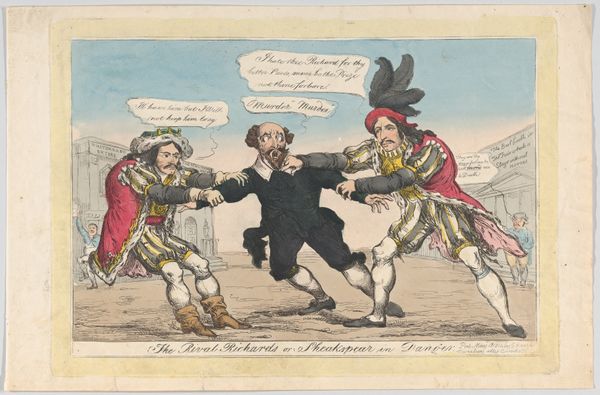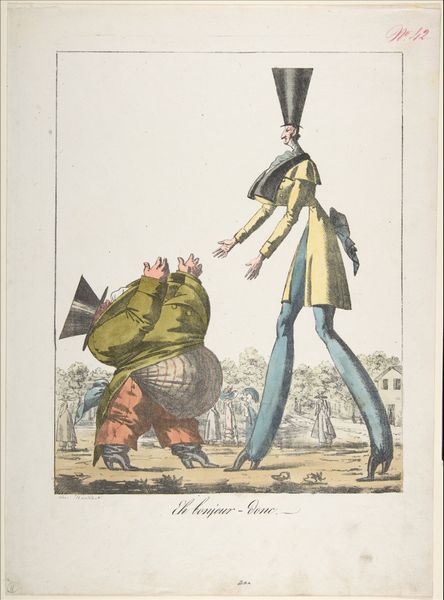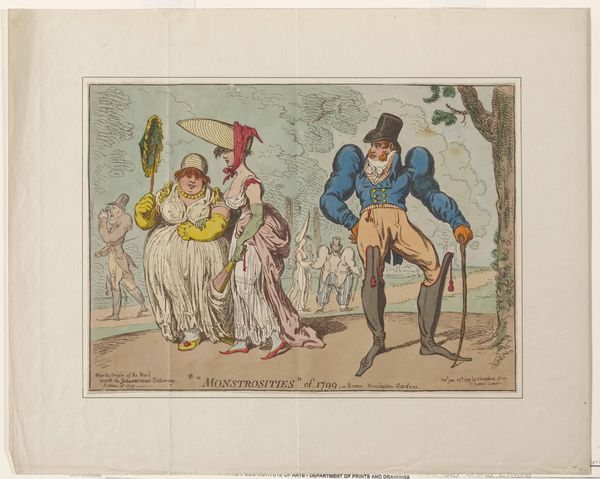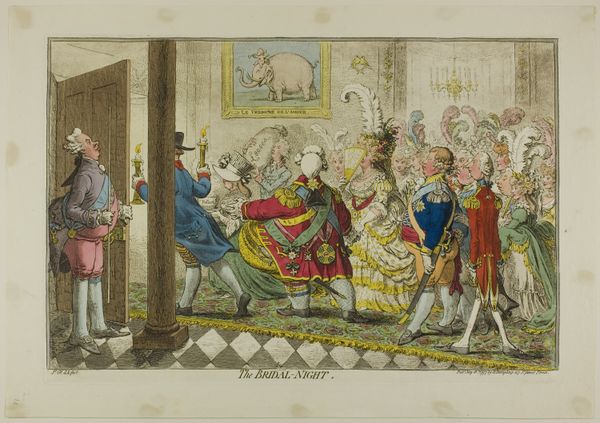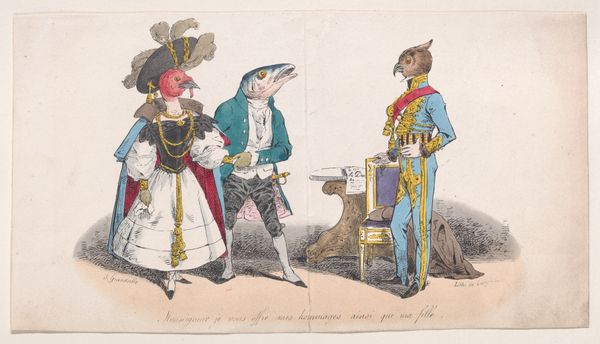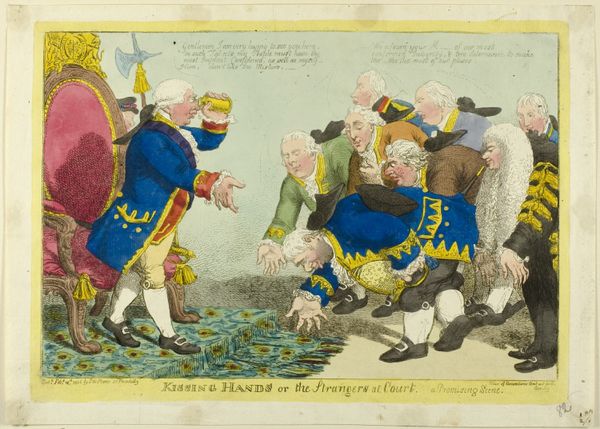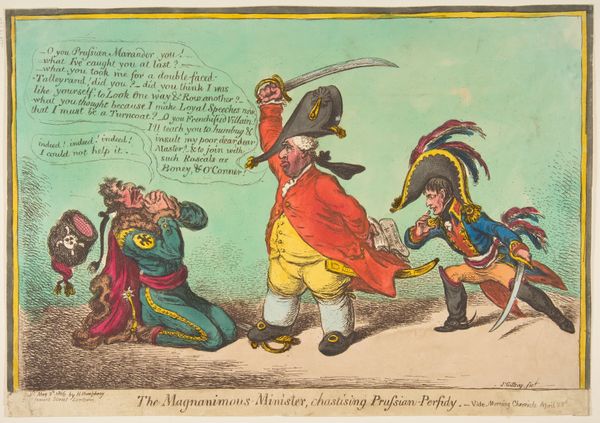
drawing, coloured-pencil, print, etching, paper
#
portrait
#
drawing
#
neoclacissism
#
coloured-pencil
# print
#
etching
#
caricature
#
paper
#
coloured pencil
#
england
#
group-portraits
#
romanticism
#
genre-painting
#
history-painting
Dimensions: 200 × 345 mm (image); 213 × 357 mm (sheet)
Copyright: Public Domain
Curator: Let's turn our attention to "Fashionables of 1818" by George Cruikshank. It's a colored etching and print made with colored pencil and etching. This piece currently resides here at the Art Institute of Chicago. Editor: My first impression is... satirical. There’s such a wonderful exaggeration of bodily form. It evokes a playful mood, but perhaps a cutting commentary on societal norms of the time, too. Curator: Precisely. Cruikshank was a master of caricature. This piece embodies a critique of the aristocracy through the lens of Romanticism, right on the cusp of Neoclassical ideals. Look at how the clothing and body shapes become symbolic, laden with meaning about class and gender. Editor: Absolutely! The impossibly high-waisted gowns, the padded shoulders, the constricted figures...they all speak volumes. Notice how the artist emphasizes verticality, elongating the figures in an almost grotesque way. This exaggeration echoes the stylistic lineage of elongated forms found in Mannerist painting, or the much later visual style of El Greco. Do you see it? Curator: Indeed, the historical and cultural implications here are fascinating. Consider the role of fashion in shaping identities. What does it mean for women to present themselves in such controlled, restrictive ways? What freedoms or oppressions does this artwork reveal within English society in 1818? It definitely serves to represent a shift in social constructs around this time. Editor: I also find the accessories very compelling. The feathered headpieces and enormous muffs feel almost like trophies – visible declarations of wealth and status. In our era of celebrity obsession, we find an interesting comparison to that historical need to impress through ornamentation. Curator: Exactly! This speaks to the enduring power of symbols within the image. What began as commentary now serves as an archetypal marker of elite circles across generations. What do you think our contemporary audience will make of this particular piece? Editor: It's always revealing to examine such loaded iconography and see how cultural memory shifts over time. While some signifiers may be lost or altered, that human tendency toward adornment persists, but in novel forms. Curator: Agreed. I'm also curious to witness how current intersectional perspectives—related to class, gender and body image—affect the audiences and inform contemporary interpretations.
Comments
No comments
Be the first to comment and join the conversation on the ultimate creative platform.
